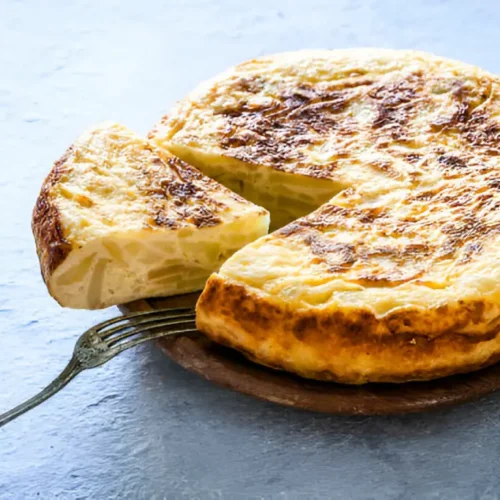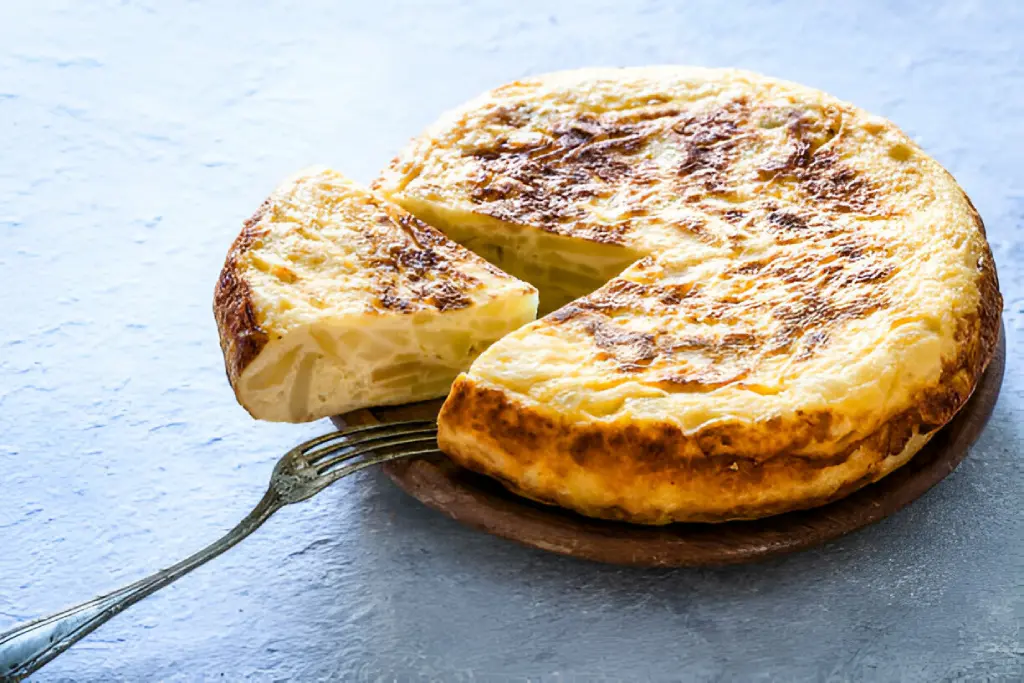The Spanish omelette, or tortilla española, is a culinary icon that has captivated taste buds for centuries. This hearty and flavorful dish is a staple of Spanish cuisine, beloved for its simplicity and versatility. In this article, we delve into the history of this beloved dish, explore its delightful variations, share expert tips for perfection, and uncover its nutritional benefits. We’ll also suggest pairing your Spanish omelette with other delectable flavors.
Table of Contents
The History of Spanish Omelette: A Journey Through Time
Originating in the Basque region of Spain in the early 1800s, the Spanish omelette was initially a humble meal for the working class. It offered sustenance and comfort, composed of potatoes, onions, and eggs. Over time, this simple dish evolved, incorporating regional ingredients and personal preferences, leading to the diverse and flavorful variations enjoyed today.
Delightful Variations: Adding Flair to the Classic Recipe
While the traditional Spanish omelette is a masterpiece, countless variations add excitement and diversity to this beloved dish. From the inclusion of vibrant bell peppers and spicy chorizo to the richness of spinach and cheese, the possibilities are endless. Experiment with different ingredients to create a unique and delicious Spanish omelette experience.
Tips and Tricks
- Potato Selection: Choose starchy potatoes like russets for a creamy texture.
- Onion Sweetness: Opt for sweet onions, such as Spanish onions, for a milder flavor.
- Egg Quality: Use fresh, high-quality eggs for the best results.
- Cooking Technique: Start with medium-high heat for the potatoes and onions, then reduce to low for the eggs.
- Flipping Mastery: Use a large plate to gently flip the omelette for even cooking.
Nutritional Benefits
This is not only delicious but also offers several nutritional benefits. Packed with protein from the eggs, it provides a satisfying and filling meal. Potatoes contribute essential vitamins and minerals, while the addition of vegetables like onions, bell peppers, and spinach boosts the dish’s nutrient content. Remember, the nutritional value can vary based on the specific ingredients used.
Recipe Pairing: Elevating Your Experience
This is a versatile dish that pairs well with a variety of sauces, adding depth and complexity to each bite. Here are some suggestions to enhance your dining experience:
- Classic and Simple: A drizzle of high-quality extra virgin olive oil with a sprinkle of flaky sea salt brings out the omelette’s natural flavors.
- Spicy Kick: A vibrant salsa verde or a smoky chipotle mayo adds a fiery contrast to the rich omelette.
- Creamy Indulgence: A dollop of garlic aioli or creamy avocado salsa provides a luxurious and satisfying accompaniment.
- Tangy Twist: A refreshing chimichurri sauce or a zesty lemon-herb vinaigrette offers a bright and refreshing contrast.
- Rich and Robust: A bold romesco sauce or a chunky homemade tomato salsa with a hint of spice complements the omelette’s hearty texture.
Experiment with different sauces to find your perfect match and elevate your Spanish omelette experience.
Common Questions (FAQ)
Q: What is the difference between a Spanish omelette and a French omelette? A: A Spanish omelette, or tortilla española, is thicker and denser than a French omelette. It’s made with potatoes, onions, and eggs, while a French omelette is typically made with just eggs and folded.
Q: Can I freeze it? A: While it’s possible to freeze a Spanish omelette, the texture can change upon thawing. It’s best enjoyed fresh.
Q: What type of potatoes are best? A: Starchy potatoes like russet or Yukon Gold work best for a creamy texture.
Q: How do I prevent the Spanish omelette from sticking to the pan? A: Use a non-stick pan and ensure it’s well-heated before adding the oil. Also, avoid overcrowding the pan.
Q: Can I add other ingredients to the omelette? A: Absolutely! The beauty of the Spanish omelette lies in its versatility. Common additions include onion, bell peppers, chorizo, spinach, and cheese.
Q: How long does a Spanish omelette keep in the fridge? A: A Spanish omelette can be stored in the fridge for up to 3-4 days in an airtight container.
Q: Can I make a Spanish omelette in advance? A: Yes, you can make it in advance and reheat it gently in a pan or oven.
Q: Is a Spanish omelette gluten-free? A: A traditional Spanish omelette is gluten-free, but be mindful of any added ingredients like bread crumbs or seasonings that might contain gluten.
Whether you’re a seasoned home cook or a novice in the kitchen, the Spanish omelette is a dish that is sure to impress. With its rich history, delightful variations, and nutritional benefits, it’s no wonder this culinary treasure has captured hearts and taste buds around the world.

Spanish Omelette: A Timeless Delight with Only 4 Ingredients
Equipment
- 1 Skillet
- 1 Bowl
- 1 knife
- 1 Plate
Ingredients
- 4-5 medium-sized potatoes, peeled and sliced thinly
- 6 eggs
- ¼ cup olive oil
- Salt to taste
Instructions
- Heat the olive oil in a non-stick skillet over medium-high heat.
- Add the sliced potatoes, and cook until the potatoes are soft and lightly browned, stirring occasionally.
- In a separate bowl, whisk together the eggs with salt and pepper to taste.
- Once the potatoes are cooked, drain off any excess oil and transfer them to the bowl with the eggs. Mix well.
- In the same skillet you used to cook the potatoes, add the egg mixture and spread it evenly.
- Cook over low heat for about 5-7 minutes or until the edges start to set.
- Use a large plate to cover the skillet and carefully flip the omelette onto the plate
- Slide the omelette back into the skillet to cook the other side for an additional 3-5 minutes until it is fully cooked.
- Once cooked, slide the omelette onto a plate, slice it into wedges, and serve.








